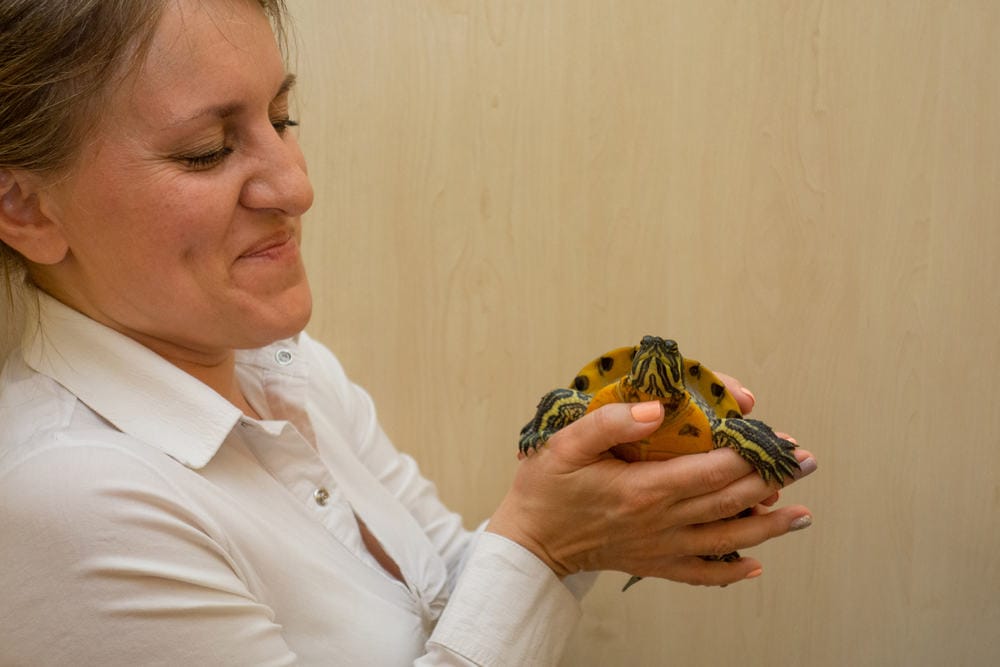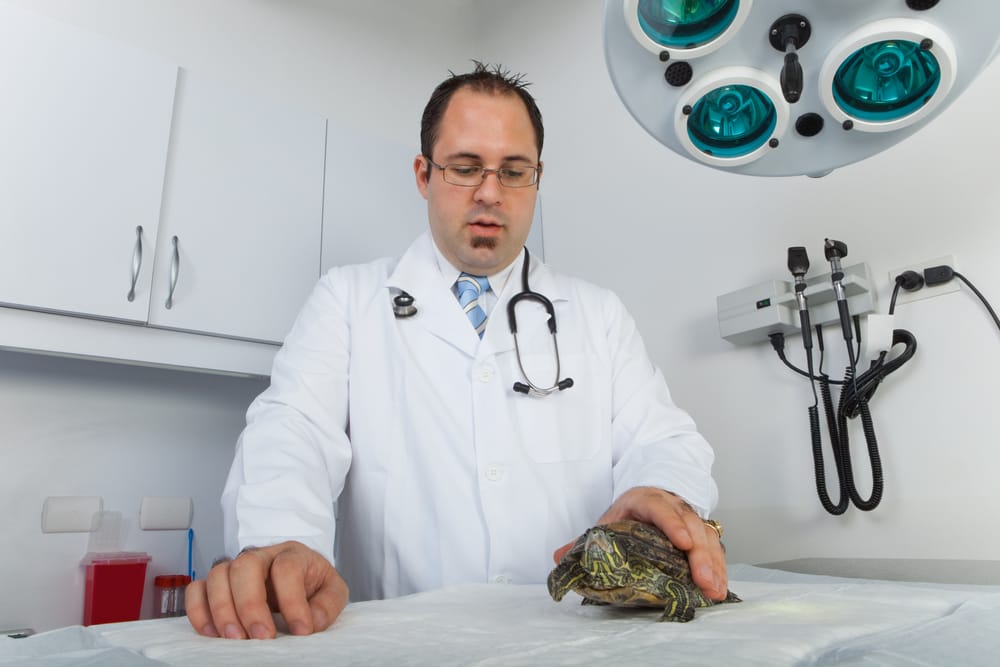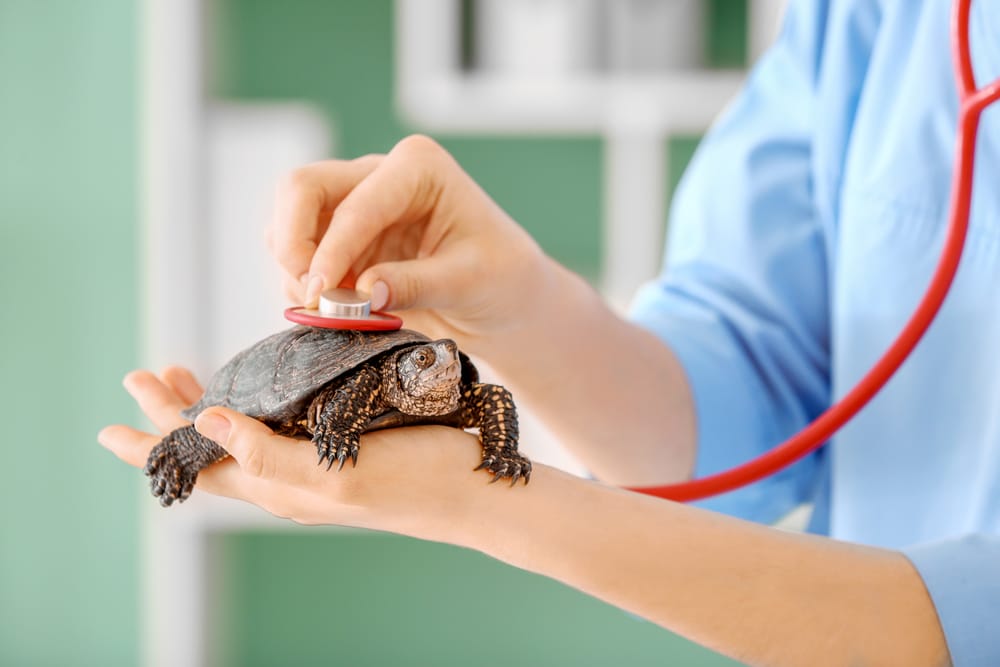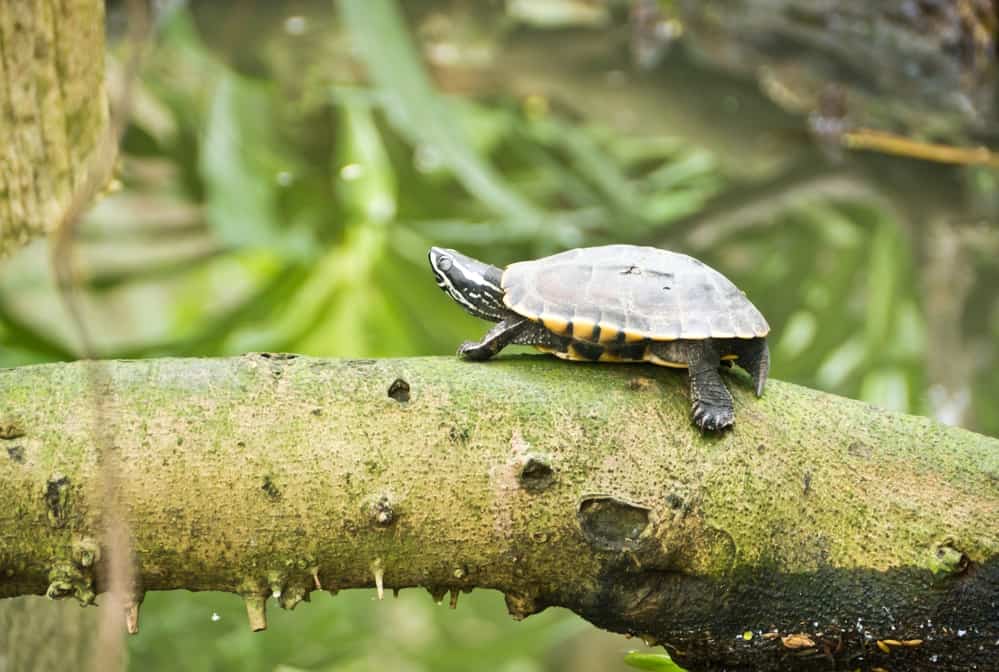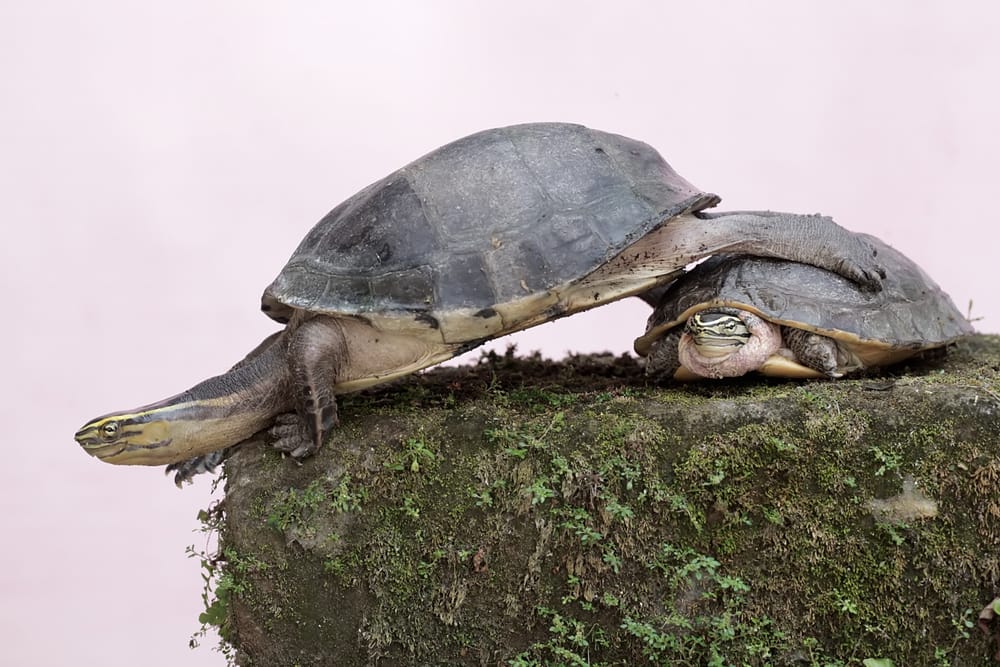6 Common Health Issues in Pet Turtles and How to Prevent Them
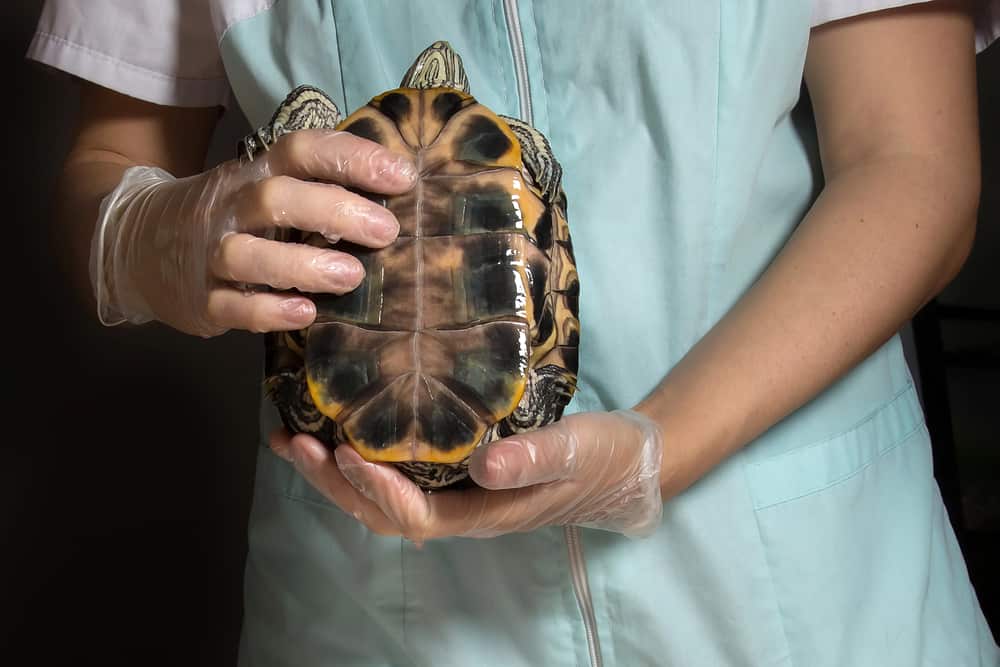
This post was created with help from AI tools and carefully reviewed by a human (Muntaseer Rahman). For more on how we use AI on this site, check out our Editorial Policy.
Turtles might look low-maintenance, but their health can go downhill fast if you’re not careful. And the worst part? They won’t show clear signs until the damage is already done.
I’ve seen too many turtles suffer from things that could’ve been easily prevented—bad diet, cold water, poor lighting, and just plain neglect.
This guide isn’t here to scare you. It’s here to help you spot the common health problems before they get serious—and to stop them from showing up at all.
If you’ve got a turtle or you’re thinking of getting one, this is the stuff you need to know. Not optional.
One of the most dangerous conditions is metabolic bone disease, which requires immediate intervention to prevent permanent damage.
Need To Talk With A Turtle Vet Right Now?
6 Health Issues Your Pet Turtle Might Suffer From
1. Metabolic Bone Disease (MBD)
This one’s a big deal. If your turtle is young, growing, and not getting the right care, MBD is probably lurking around the corner.
It’s a bone disorder that makes their shell soft, their limbs weak, and their movements clumsy. You’ll notice they aren’t as active as before.
Some even develop crooked beaks or weird nail shapes. Worst case? Their bones break from something as simple as a fall or bump.
What to Watch For
- Soft or misshaped shell
- Weak limbs, dragging back legs
- Jerky movements or twitching
- Deformed beak or nails
- Swollen body parts
- Acting lazy all the time
What Causes It?
MBD isn’t some random disease. It happens when the turtle doesn’t get enough calcium, can’t absorb it, or doesn’t have the heat to process it properly.
Here’s where things usually go wrong:
- Cold Basking Area: Even with a good diet and light, a cold basking spot ruins everything. They need that warmth to stay metabolically active.
- No UVB Light: Without UVB, turtles can’t make vitamin D3. And without D3, their body can’t absorb calcium.
- Calcium-Deficient Diet: Feeding low-quality pellets or skipping calcium-rich greens can mess things up fast.
How to Prevent MBD
You don’t need fancy gear or exotic supplements. Just stick to these basics:
- Avoid Meat-Heavy Diets: Especially for adults. They don’t need it, and too much protein throws off their calcium balance.
- Install a UVB Light: Full-spectrum UVB, 10–12 hours a day. No compromises.
- Keep the Basking Spot Hot: Around 90–100°F is ideal.
- Feed Properly: Use high-quality turtle pellets. Mix in calcium-rich greens like collard, mustard, or dandelion. Dust with calcium powder if needed.
2. Pyramid Growth Syndrome (Bumpy Shell)
If your turtle’s shell starts to look like a bunch of little mountains instead of smooth armor, that’s pyramiding. It means the scutes (those shell plates) are growing upward instead of laying flat.
It’s not just a cosmetic issue. A misshaped shell can mess with how the turtle moves, grows, and defends itself.
And once it forms, it’s permanent. No fixing it later.
What to Watch For
- Sometimes, soft shell between the bumps
- Raised, uneven scutes
- A shell that looks bumpy or spiky
- Growth rings that are tall and stacked
Many owners confuse normal shedding with illness, so check this guide on turtle shell rot vs shedding if you’re uncertain.
What Causes It?
Pyramiding usually creeps in when turtles are overfed or kept in the wrong setup. Here’s what pushes it:
- Too Much Protein: Daily meat or worms may sound like a treat, but it throws off the growth balance.
- Low Humidity: Turtles that come from humid places need moist air. Dry indoor tanks mess with their shell development.
- No UVB or Basking Time: Without proper UVB or heat, they can’t process calcium—even if they’re eating enough of it.
How to Prevent It
You can’t reverse pyramiding, but you can 100% stop it from ever starting.
- Skip the Daily Protein: Adult turtles don’t need meat every day. Stick to pellets and leafy greens. Save bugs or worms for rare treats.
- Balance the Diet: Add calcium-rich veggies. Use a calcium block or dust food lightly once or twice a week.
- UVB Is Non-Negotiable: No UVB = no calcium absorption. Don’t guess—check if your light actually gives off UVB.
- Mind the Humidity: If your area’s dry, use a humidifier. Or mist the tank regularly. Turtles raised in dry air tend to pyramid fast.
3. Parasites (Inside the Gut)
Most turtles carry some parasites in their system. That’s normal. But when those parasites multiply too fast, things get ugly.
They start stealing all the nutrients, making your turtle weak, skinny, and sick. And by the time you notice, the damage might already be deep.
What to Watch For
- Rapid weight loss
- Diarrhea or runny poop
- Turtle stops eating
- Lethargic and sluggish
- You might even spot blood in their waste
What Causes It?
This usually comes down to poor tank hygiene. Here’s what gives parasites the green light:
- Dirty Water: Leftover food, poop, and dead plants build up fast. That muck feeds bacteria and parasites.
- No Water Changes: Skipping regular cleanups lets harmful microbes bloom.
- Cold, Damp Conditions: A cold tank weakens the turtle’s immune system. Parasites take that chance to grow out of control.
How to Prevent It
You won’t get rid of every parasite—and you don’t have to. Your goal is to keep their numbers low.
- Change 30% of the Water Weekly: No excuses. Do it on a fixed day.
- Scrub the Tank Walls: A soft brush works fine. Algae and gunk pile up fast if ignored.
- Use a Separate Feeding Bin: Feeding turtles in a clean bowl means less food mess in the main tank.
- Watch the Heater: Cold tanks lead to weak turtles. Keep water around 75–80°F for most species.
4. Respiratory Infection (When They Struggle to Breathe)
If your turtle’s breathing through its mouth, wheezing, or bubbling at the nose, it’s not a cute quirk. That’s a red flag for a respiratory infection.
This kind of illness slows them down, messes with their appetite, and makes them miserable. If ignored, it can get serious fast.
Symptoms To Look For
- Runny or bubbly nose
- Breathing through the mouth
- Swollen, watery eyes
- Loss of appetite
- Weakness or floating lopsided
- Gasping for air at the surface
If your turtle shows signs of respiratory distress, learn how to treat respiratory infection in turtles at home before the condition worsens.
Why Does It Happen?
Almost always, it starts with the tank being too cold or too damp for too long.
- Cold Water or Air: A weak heater or chilly basking area lowers their immune system.
- No Dry Basking Spot: If the basking area is wet or half-submerged, they never fully dry off. That’s a problem.
- Broken Heater or Light: Sometimes the gear looks fine but isn’t working right. Always double-check temps.
How To Prevent Respiratory Infection
Turtles need to warm up completely after swimming. That’s how they fight off illness.
- Use a Strong Heater: Water should stay around 78–82°F, depending on the species. Cheap heaters can fail without warning.
- Set Up a Dry, Warm Basking Area: No dripping platforms. Use a solid dock or raised box they can fully dry off on.
- Use a Halogen or Full Spectrum UVB Bulb: UVB helps with vitamins, and halogen adds the heat they need after a swim.
- Watch Their Behavior: If they bask less or act sluggish, something’s off.
5. Vitamin-A Deficiency
This one sneaks up quietly but can mess your turtle up in a lot of ways—swollen eyes, weak skin, trouble peeing, even breathing issues.
Turtles rely heavily on their eyesight. If they can’t see well, they can’t find food. So this isn’t just about nutrition—it’s about survival.
Symptoms To Look For
- Puffy, swollen eyelids
- Red, watery, or crusty eyes
- Trouble seeing food
- Weight loss
- Trouble breathing or clogged nose
- Constant eye rubbing with their legs
Why Does It Happen?
This mostly comes from a poor diet. Not just bad food—but wrong food.
- Fish Food or Wrong Pellets: Not all pellets are made for turtles. If it’s not formulated for reptiles, skip it.
- Low-Quality Turtle Pellets: Some budget brands barely include any real vitamins.
- Too Much Iceberg Lettuce: It’s watery and useless. Doesn’t count as a vegetable.
- Too Much Meat: Turtles may love it, but long-term meat-heavy diets don’t give them what they need.
How To Prevent Hypovitaminosis-A
Fixing this starts with changing what’s in the food bowl.
- Offer Beta-Carotene–Rich Foods: These turn into vitamin A in the turtle’s body. Go for dark greens, squash, sweet potato, papaya, strawberries, and dandelion leaves.
- Check Your Pellets: Choose brands with real vitamins, not just filler.
- Cut the Junk: No more feeding meat every day or using fish flakes.
- Know the Difference: If both eyes are swollen and red, think vitamin A. If it’s just one side or looks like a lump—could be an abscess instead.
6. Ear/Aural Abscess
If your turtle’s head looks lopsided or oddly puffy near the jawline, it’s probably not fat—it’s an ear abscess.
This means pus has built up inside the ear canal. And no, it doesn’t drain on its own. The only fix is surgery.
Symptoms To Look For
- One side of the head looks swollen
- Eye on that side might be red or puffy
- Turtle stops eating
- Struggles to lift or turn head
- Head shape looks weird or off-balance
Why Does It Happen?
Most abscesses are caused by bacterial infection, but the bacteria get in due to poor conditions.
- Filthy Tank Water: Bacteria love poop, leftover food, and rotting gunk.
- Sharp Decorations: A scrape inside the mouth can open the door for infection.
- Lack of Vitamin A: Weak tissue makes it easier for bacteria to spread.
- Chronic Stress: Bad lighting, freezing water, or overcrowded space wears them down.
How To Prevent Abscesses
You can’t treat this at home. Once it shows up, you’ll need a vet to cut it out. But here’s how to avoid that nightmare:
- Clean Your Tank Regularly: Use a siphon, scrub surfaces, and do partial water changes weekly.
- Use a Filter That Actually Works: Don’t rely on a tiny sponge filter for a 40-gallon setup.
- Check Decorations for Sharp Edges: File down rocks or swap in smooth pieces.
- Keep the Diet Balanced: Add colorful fruits and greens high in vitamin A.
- Watch for Early Swelling: Catching it early can save your turtle a lot of pain (and you a vet bill).
Some Other Health Issues Every Turtle Keeper Should Be Aware Of
Not every turtle health problem fits into a neat box, but these are still worth knowing about:
Obesity
If your turtle looks like it’s bursting out of its shell or can’t pull its limbs in properly, it’s probably overweight. This happens when they eat too much protein and don’t move around enough.
- Fix it by cutting back on fatty foods and switching to a bigger tank.
- Turtles need space to swim, not just sit and snack. A 4-inch turtle should have at least 40 gallons.
Overgrown Beak
Turtles use their beaks to bite, tear, and chew. But if their diet is too soft or lacks calcium, the beak won’t wear down naturally—it just keeps growing.
- Add a cuttlebone to the tank. It’s cheap, full of calcium, and works like a toothbrush for their face.
- Harder veggies and proper pellets also help keep the beak trimmed.
Salmonella
This one’s more about you than your turtle. Turtles can carry salmonella on their skin and shell—even if they look totally healthy.
- Always wash your hands after handling your turtle, cleaning the tank, or touching anything inside it.
- And don’t let kids kiss them. Yes, that actually happens.
This Hilarious Turtle Book Might Know Your Pet Better Than You Do
Let’s be real—most turtle care guides feel like reading a textbook written by a sleep-deprived zookeeper.
This one’s not that.
Told from the snarky point of view of a grumpy, judgmental turtle, 21 Turtle Truths You’ll Never Read in a Care Guide is packed with sarcasm, sass, and surprisingly useful insights.
And hey—you don’t have to commit to the whole thing just yet.
Grab 2 free truths from the ebook and get a taste of what your turtle really thinks about your setup, your food choices, and that weird plastic palm tree.
It’s funny, it’s honest, and if you’ve ever owned a turtle who glares at you like you’re the problem—you’ll feel seen.
Before You Leave!
Most turtle illnesses don’t pop up overnight. They build up quietly over weeks or months—through bad lighting, poor food, dirty water, or just plain guesswork.
The good news? You can avoid almost all of it by giving your turtle the setup it actually needs, not just what looks cute on Instagram.
If you’re not sure what you’re missing, I’ve put together a checklist of must-have gear for any turtle tank—filters, lights, heaters, feeders, all of it.
Get that right, and your turtle has a real shot at living a long, healthy, drama-free life.
Article Link: 18 Must have Accessories For A Perfect Turtle Tank.

About Author
Muntaseer Rahman started keeping pet turtles back in 2013. He also owns the largest Turtle & Tortoise Facebook community in Bangladesh. These days he is mostly active on Facebook.



